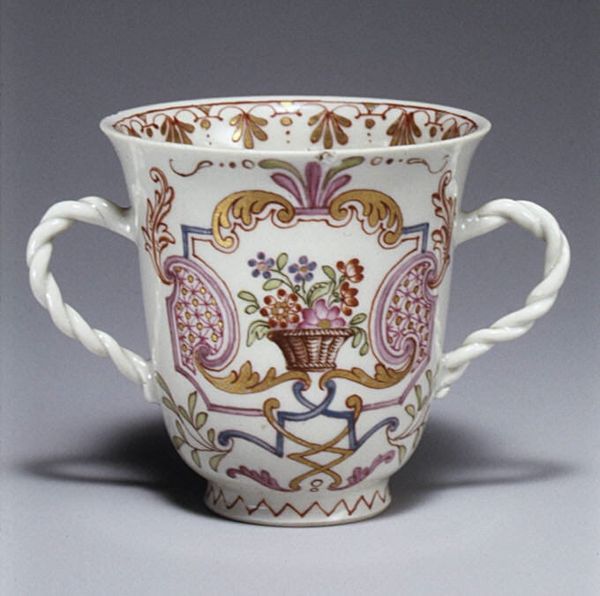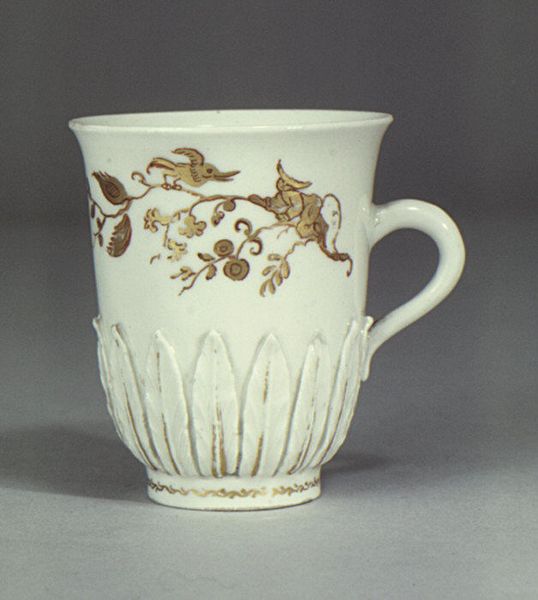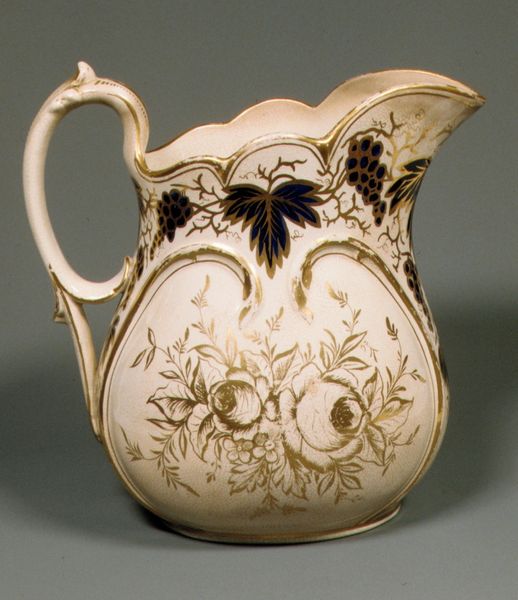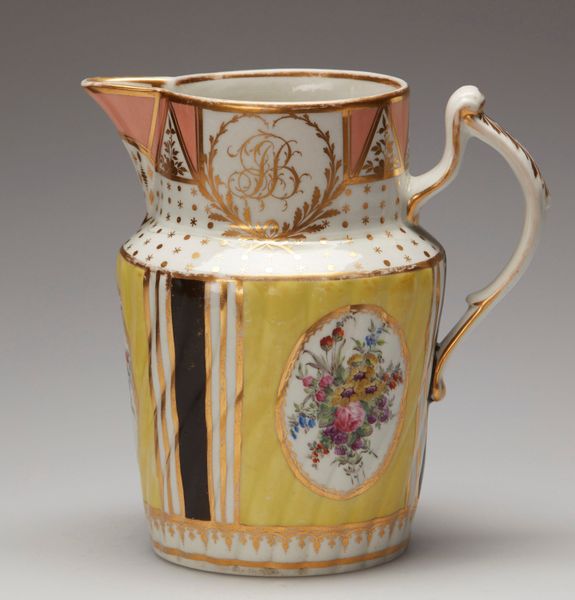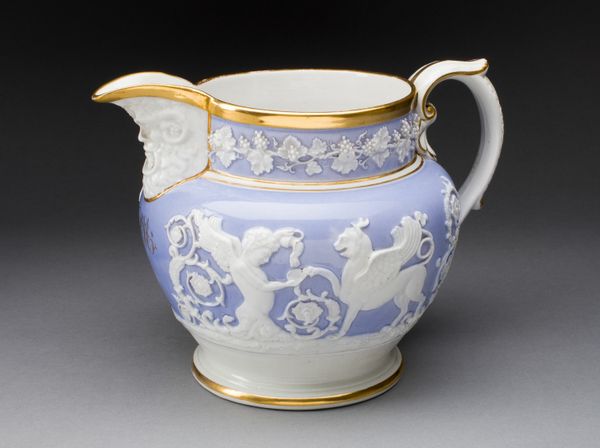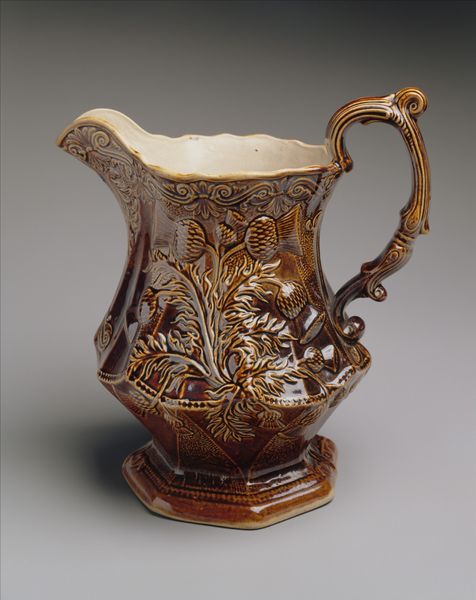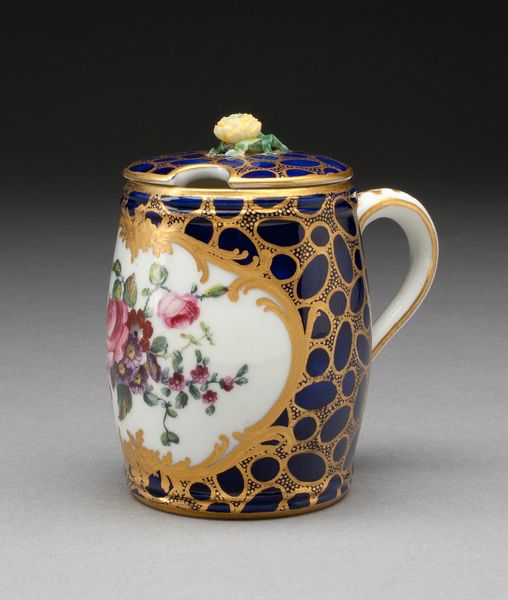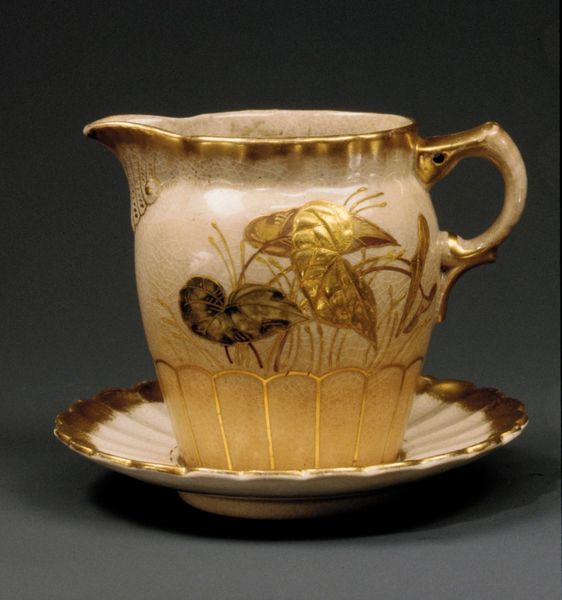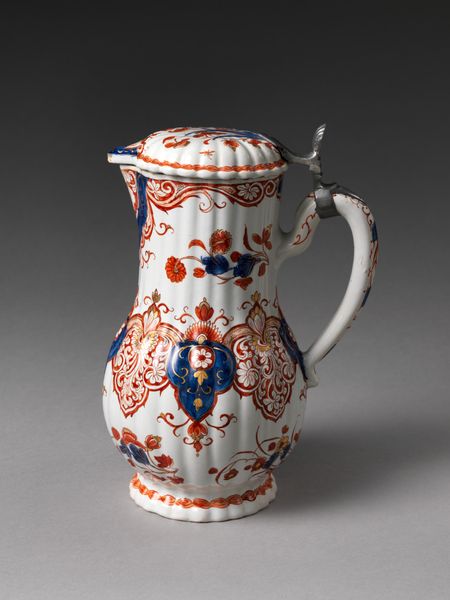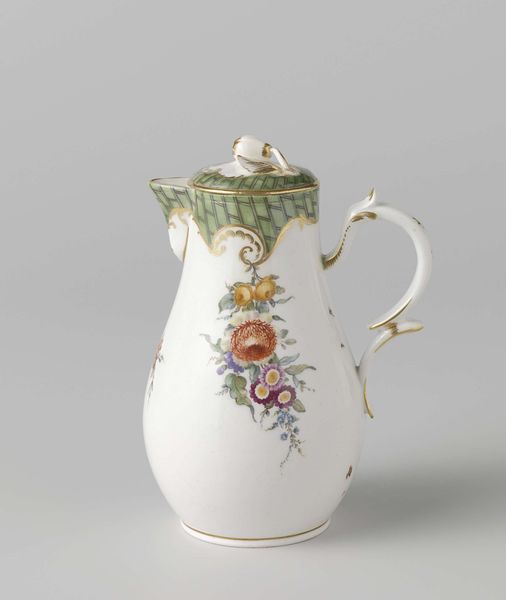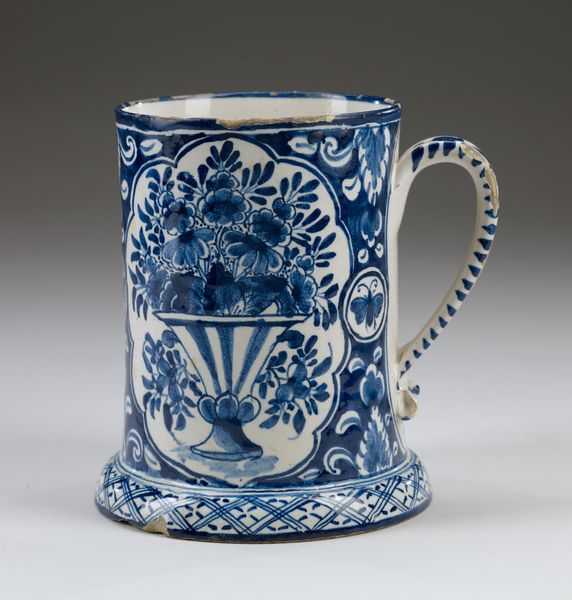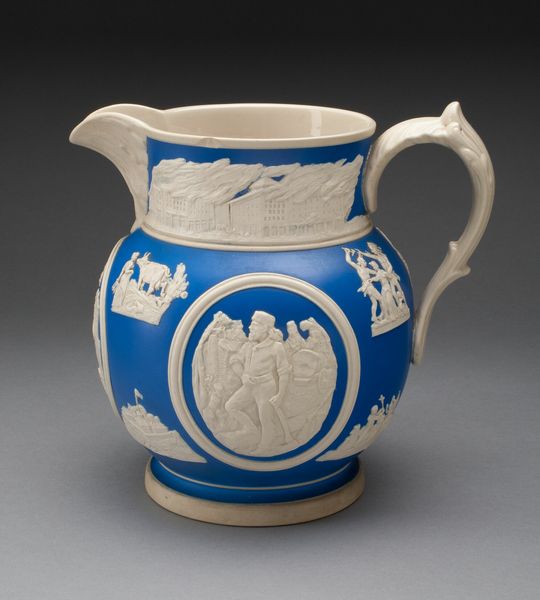
ceramic, earthenware
#
ceramic
#
earthenware
#
stoneware
#
ceramic
#
united-states
Dimensions: 8 1/8 x 6 1/2 in. (20.6 x 16.5 cm)
Copyright: Public Domain
Curator: Here we have a striking piece attributed to Charles Cartlidge and Company, a pitcher crafted sometime between 1845 and 1856. It's currently held here at the Metropolitan Museum of Art. Editor: My first impression is how elaborate it is for something so quotidian. All that raised decoration in gold, it’s a real statement piece. Curator: It’s quite loaded symbolically. Look at how the handle mimics a tree branch and how oak leaves and acorns are strewn across the body of the pitcher. Oak, of course, signifies strength, endurance, and stability, all pretty important national virtues during a time of westward expansion and internal division in the United States. Editor: Absolutely. And then we have the eagle, right above a shield with those vertical stripes – undeniable symbols of American identity. The eagle's beak appears to hold a banner. The stripes are fascinating; the political landscape then was fraught with challenges related to abolitionism and states’ rights—the use of these national emblems here could be seen as a way to shore up unity and project power. Curator: Precisely. There’s a subtle message here, one meant to resonate with people beyond mere functionality. This pitcher, made of earthenware and ceramic, aims to create a cultural narrative within a domestic sphere. Even the colors -- gold, white, and red -- play into the symbolism, hinting at wealth, purity, and courage. It's meant to reinforce certain ideologies. Editor: It’s beautiful but complicated, isn't it? Even in an everyday object, these potters inscribed national myths that papered over a reality filled with exploitation and conflict. Curator: That's a key tension in understanding nineteenth-century American decorative arts. It attempts to project unity and progress. Symbols are used to evoke emotional responses that connect deeply with the viewer and affirm collective beliefs, no matter how contradictory. Editor: Indeed. Analyzing these visual cues offers profound insights into the cultural psyche of the time, allowing us to critically assess the historical underpinnings of our contemporary moment.
Comments
No comments
Be the first to comment and join the conversation on the ultimate creative platform.
